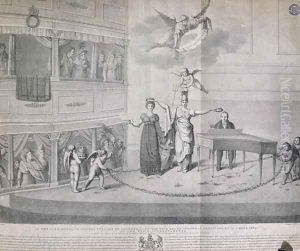Pistrucci, Filippo Paintings
Filippo Pistrucci was an Italian gem engraver, medallist, and coin designer, born in Rome in 1783. He is most renowned for his work in England, where he moved in 1815 and quickly became associated with the Royal Mint. His most famous creation is the Saint George and the Dragon design that graces the reverse of the gold Sovereign coin, first introduced in 1817. This iconic design has been used on British coinage with some interruptions since its inception and is celebrated for its artistry and symbolism.
Pistrucci's journey into the world of numismatics and medal design was both a testament to his talent and the times he lived in. Despite his Italian origins, his work had a profound impact on British coinage, illustrating the cross-cultural exchange of art and ideas during the 19th century. Before his association with the Royal Mint, Pistrucci had established himself as a skilled gem engraver and came to England on the recommendation of a British diplomat who was impressed with his work. His move to England was also influenced by the political unrest in Italy and the Napoleonic Wars, which made the country less stable for artists.
In England, Pistrucci's skills were quickly recognized, and he was introduced to the Master of the Mint, William Wellesley Pole, through the society artist Sir Thomas Lawrence. Pole commissioned him to create designs for the new gold and silver coins of George III. Despite facing opposition from other engravers and the Mint's officials due to his foreign origins and lack of English language skills, Pistrucci's talent prevailed. His designs, especially the Saint George and the Dragon motif, were praised for their neoclassical beauty and intricate detail. Beyond the Sovereign, Pistrucci also designed coins for George IV, William IV, and Queen Victoria, as well as numerous medals, including the Waterloo Medal, which commemorated the British victory at the Battle of Waterloo. His work on the Waterloo Medal was particularly challenging and took over thirty years to complete, largely due to its complexity and the high expectations set by the government.
Pistrucci's relationship with the Royal Mint was often tumultuous, marked by disputes over pay, recognition, and artistic freedom. Despite these challenges, his legacy in the field of numismatics is undeniable. He remained in England until his death in 1855, leaving behind a body of work that continues to be celebrated for its artistic excellence and influence on coin design. Filippo Pistrucci's contributions to the art world extended beyond his immediate creations, influencing the development of numismatic art and serving as an enduring link between Italian artistic traditions and British cultural heritage.
